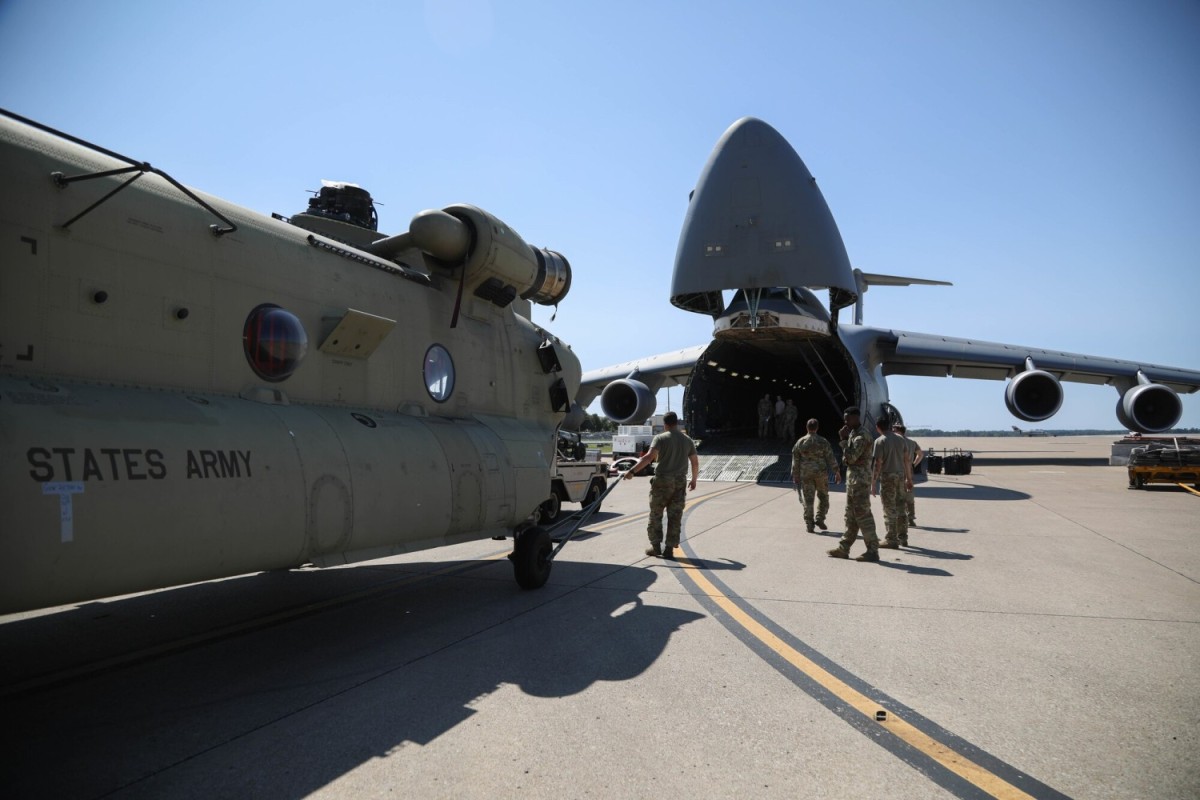By Capt. Matthew Visser – U.S. Army
FORT BRAGG, N.C. — Soldiers from the XVIII Airborne Corps and 82nd Airborne Division are leading the U.S. Army’s transition to data-centric operations as they use new technologies to counter evolving threats.
Leveraging Army Vantage, the Army’s enterprise data decision platform that connects to and draws data from new and legacy systems in any form at any scale, deployed units are configuring end-to-end operational applications to streamline the outload of forces, automate logistics status reporting, capture new unstructured data and make real-time, intelligent decisions.
Commanders and staff are often dependent upon a myriad of disconnected joint, service level and combatant command data sources that, on their own, are unable to provide a single operational picture to commanders. In addition, these systems do not inform echelons below corps, and they lack the flexibility and adaptability to accommodate rapidly changing priorities and requirements on the ground.
Soldiers are now able to bring modern technology to bear against legacy systems to solve the critical knowledge gaps for commanders in stride with Army Vantage,
“Our efforts on [Army] Vantage connected dozens of standalone systems and removed swivel chair operations to streamline our deployment process, ensuring we hit the ground running,” said XVIII Chief Technology Officer Jared Summers.
Traditionally, deployments have been tracked with small pieces of information that inform outload operations, siloed across tens of disconnected — and sometimes outdated — systems. These different systems didn’t provide the full picture of the outload process making it cumbersome to stitch together segments of the common operating picture to produce up-to-date data.
As a result of this process, Soldiers in January and February resorted to phone calls and emails to track the movement of critical units. This meant deploying units manually entering data into Excel spreadsheets and PowerPoint slide decks to track the most up-to-date Unit Movement Plans. This manual process consumed hundreds of staff hours entering, formatting, and validating that data. The ever-changing data made even the most updated Excel spreadsheet or PowerPoint turned stale before the information was distributed across formations.
On recent deployments, the 82nd Airborne Division faced new challenges with seeing ground truth. Units were tasked to capture data from new sources at the edge — including data from partner nations — to inform operational decisions. No system existed for this type of mission, but the Soldiers of America’s Contingency Corps were able to solve this problem in days using Army Vantage as a starting point.
“[Army] Vantage became a game changer for us during our last deployment,” said XVIII Chief Data Officer Jock Padgett. “With the centralized and well-connected data operations platform, we enabled warfighters from the edge to Joint Staff with new, rapidly built end-to-end data pipelines, decision making modules and meaningful dashboards.”
The advantage of Army Vantage’s no-code application builder allowed Paratroopers from the 82nd Airborne Division to configure a transportation management tool to integrate real-time updates from tactical edge devices and enabled Soldiers to track and execute logistical tasks from a single, connected mission command environment.
Within a week, the 82nd Airborne Division transitioned from antiquated Excel spreadsheets reporting to a fully functioning application built in Army Vantage.

“The speed at which engineers and citizen data scientists can build products for operational users is exponentially faster on [Army] Vantage,” said Padgett. “Previously, we would spend the majority of time trying to get systems accredited or trying to gain access and integrate data. Now, we can actually fight with that data.”
At the XVIII Airborne Corps headquarters, Soldiers with Project Ridgway, the corps’ AI-driven initiative, and the newly established Data Warfare Company help configure applications within Army Vantage to track real-time equipment supply levels in theater.
“Leveraging the [Army] Vantage platform, we were able to rapidly create workflows ensuring we had up-to-date status of all classes of supply,” said Summers. “We were also able to leverage the analytic and monitoring tools on Vantage to compare expected to actual usage rates and set parameters or alerts when a certain class of supply was running low.”
“Our goal is to transform our logistics operations from a pull to a push-based system,” he added. “Just as with just-in-time logistics, we will know what is needed, when its needed and where to ensure a secure supply chain.”
Army data platforms should enable units to build for the unexpected, adapt to changing conditions and aggregate new battlespace information for which collection was not anticipated prior to — and during — the onset of a contingency.

Army Vantage’s flexible no-code, app-building tools and user-configured data capture forms are empowering America’s Contingency Corps to do just that. By having the tools to rapidly and seamlessly combine curated data from multiple source systems with enhanced insights captured from those on the front lines, units can create a digital twin that replicates the world in its truest state.
With an established application interface layer, Army Vantage provides this novel data asset to warfighting and logistics systems, powering a cohesive decision environment and enabling the XVIII Airborne Corps’ effort to see the battlespace in a single pane of glass.
“We’re continuing to grow the data integrations across [Army] Vantage, asking new, novel questions related to operations, logistics, personnel, and intelligence data. [Army] Vantage has tremendously advanced the Army’s Single Pane of Glass initiative,” said Padgett. “We’re making progress.”
Article and photos: U.S. Army
